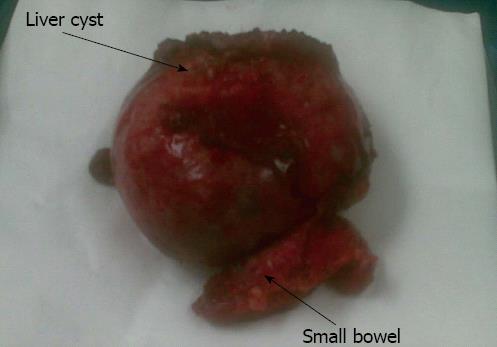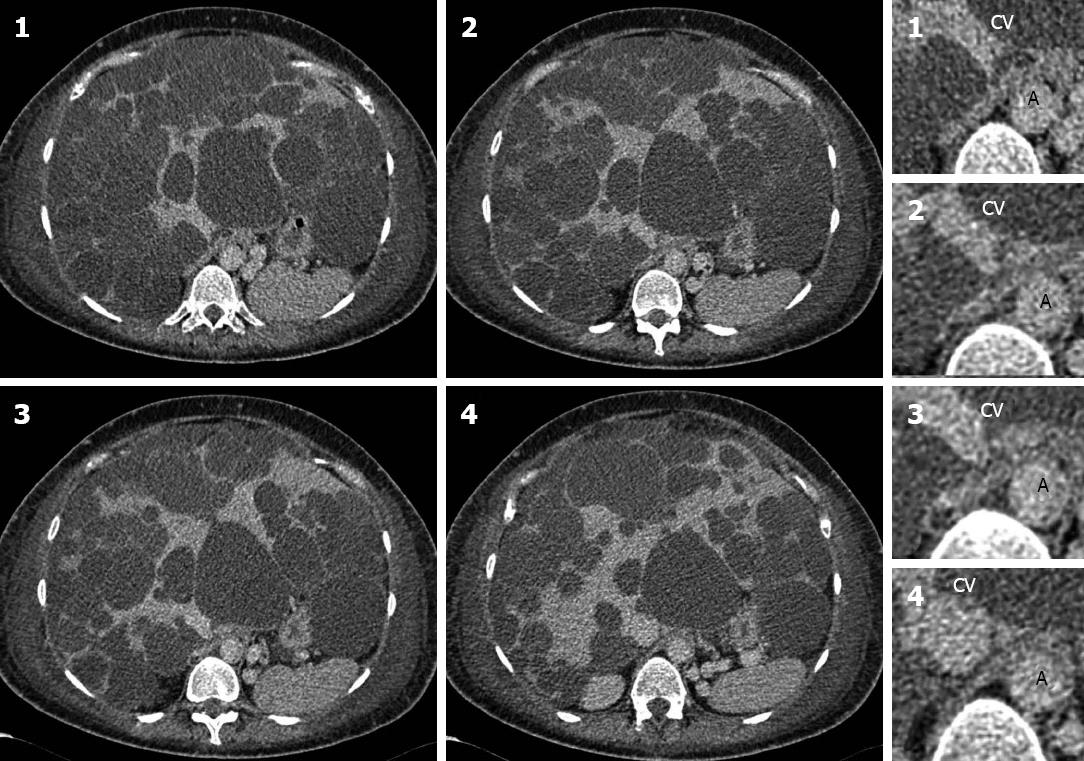Copyright
©2012 Baishideng Publishing Group Co.
World J Hepatol. Dec 27, 2012; 4(12): 406-411
Published online Dec 27, 2012. doi: 10.4254/wjh.v4.i12.406
Published online Dec 27, 2012. doi: 10.4254/wjh.v4.i12.406
Figure 1 Computed tomography.
A: The liver cyst causing common bile duct compression and dilation of the intrahepatic bile ducts; B: Multiple liver cysts with free fluid around the liver; C: The cyst compressing the portal vein; D: The splenic varices from the resulting portal hypertension.
Figure 2 A cross-sectional magnetic resonance imaging scan confirming the homogenous appearance of the cysts suggestive of a simple liver cyst.
Figure 3 Coronal magnetic resonance image showing the liver lesion with apparent internal membranes extending from segments V and VI of the liver to the right iliac fossa.
Figure 4 The resected liver cyst of patient 3 with attached small bowel.
Figure 5 A transverse section of the abdomen on computed tomography scanning.
The left 4 panels represent cranio-caudal sections of the abdomen while the right 4 panels represent magnifications. Panel 4 shows the normal inferior vena cava (CV) and aorta (A), but the CV becomes compressed as can be seen in panel 1-3.
Figure 6 A positron emission tomography-computed tomography scan during the infection (A) and after treatment (B).
Picture A shows appearances consistent with multiple infectious cysts, with a medium intense, circular fluorodeoxyglucose-accumulation in the middle of the right liver.
- Citation: Macutkiewicz C, Plastow R, Chrispijn M, Filobbos R, Ammori BA, Sherlock DJ, Drenth JP, O'Reilly DA. Complications arising in simple and polycystic liver cysts. World J Hepatol 2012; 4(12): 406-411
- URL: https://www.wjgnet.com/1948-5182/full/v4/i12/406.htm
- DOI: https://dx.doi.org/10.4254/wjh.v4.i12.406














